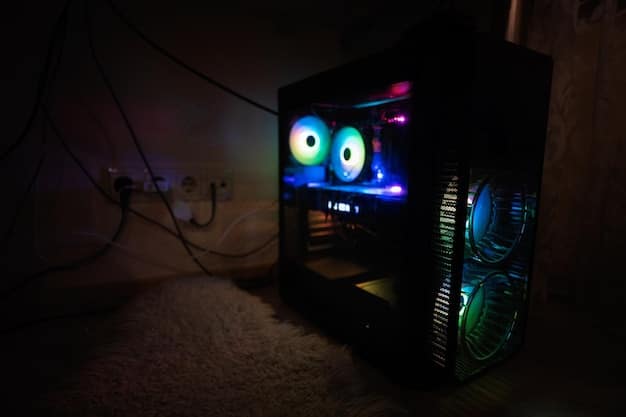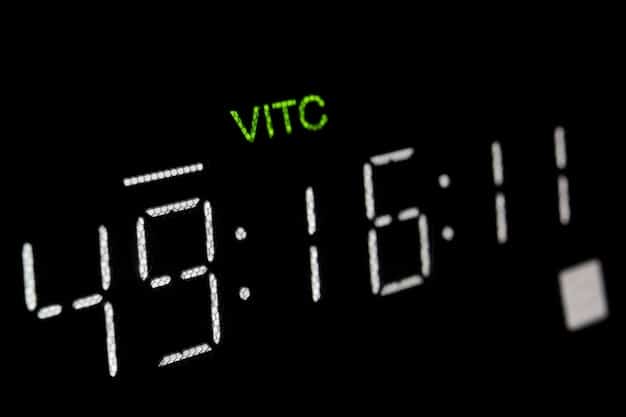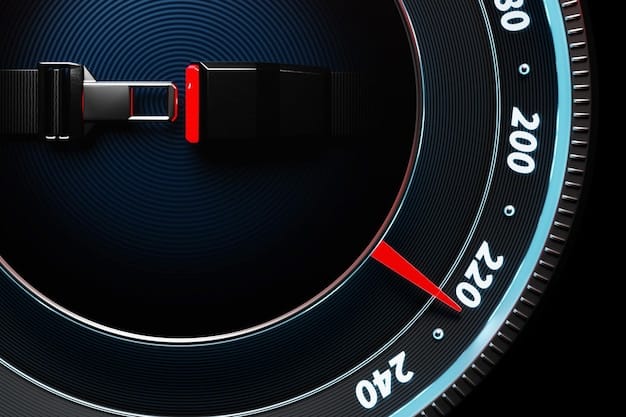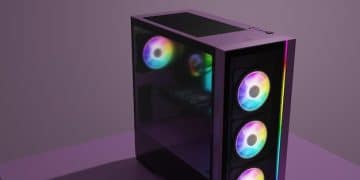Unlock +15% FPS: 2025 Guide to Overclocking Your GPU Safely

Unlock 15% More FPS: The Updated 2025 Guide to Overclocking Your PC GPU Safely explores the methods, software, and precautions necessary to safely overclock your GPU, boosting your gaming performance without damaging your hardware in 2025.
Ready to squeeze every last frame out of your gaming rig? This guide will show you how to unlock 15% More FPS: The Updated 2025 Guide to Overclocking Your PC GPU Safely, so you can boost performance and get the smoothest gaming experience possible.
What is GPU Overclocking and Why Do It?
GPU overclocking involves pushing your graphics card beyond its factory-set limits to achieve higher clock speeds. This results in increased frame rates and smoother gameplay, especially in graphically demanding games.
But why should you bother overclocking? Here are a few reasons:
Free Performance Boost
Overclocking is essentially a free upgrade. You’re using the hardware you already own to its fullest potential, without spending any extra money.
Improved Gaming Experience
Higher frame rates lead to smoother, more responsive gameplay. This is especially crucial for competitive gaming, where every millisecond counts.
Extending the Life of Your Hardware
If your PC is struggling to run newer games, overclocking can give it a temporary boost, allowing you to delay upgrading your entire system.
- Increasing clock speeds to improve frame rates.
- Getting a free performance boost without additional hardware costs.
- Extending the lifespan of existing hardware.
However, it’s crucial to understand the risks involved. Overclocking can lead to overheating and potentially damage your GPU if not done correctly. That’s why this guide emphasizes safe and responsible overclocking techniques to unlock 15% More FPS: The Updated 2025 Guide to Overclocking Your PC GPU Safely.
In summary, GPU overclocking is a fantastic way to improve your gaming experience, but it’s crucial to approach it with caution and follow best practices.
Preparing Your System for Overclocking
Before you start tweaking your GPU settings, it’s essential to prepare your system to handle the increased heat and power draw. Proper preparation will ensure a stable and safe overclocking experience.
Here’s what you need to do:
Monitoring Software
Download and install monitoring software like MSI Afterburner or HWMonitor. These tools allow you to track your GPU’s temperature, clock speed, and voltage during overclocking.
Stress Testing Software
Download and install stress testing software such as FurMark or Unigine Heaven. These programs will push your GPU to its limits, allowing you to test the stability of your overclock.
Update Drivers
Make sure your graphics drivers are up to date. Newer drivers often include performance improvements and bug fixes that can help with overclocking stability.
These preparations unlock 15% More FPS: The Updated 2025 Guide to Overclocking Your PC GPU Safely, which will allow you to improve performance without causing damage to your PC and components.

Preparing your system properly is important, or you may cause irreversible damage.
Understanding GPU Clock Speeds and Voltages
To safely overclock your GPU, it’s essential to understand the key parameters you’ll be adjusting: clock speeds and voltages. Knowing how these parameters interact will help you achieve a stable and effective overclock.
Here’s a breakdown:
- Core Clock: The frequency at which your GPU’s core operates. Increasing the core clock generally results in higher frame rates.
- Memory Clock: The frequency at which your GPU’s memory operates. Increasing the memory clock can improve performance in memory-intensive tasks, such as texture loading.
- Voltage: The amount of power supplied to your GPU. Increasing the voltage can help stabilize higher clock speeds, but it also increases heat output.
Finding the right balance between clock speeds and voltages is crucial. Pushing the clock speeds too high without increasing the voltage can lead to instability, while increasing the voltage too much can cause overheating.
With unlock 15% More FPS: The Updated 2025 Guide to Overclocking Your PC GPU Safely, you can see how it will positively impact your gaming, but you must also learn how to do it right!
Understanding these parameters is part of that learning and doing process to keep you safe and your machine in tack.
Step-by-Step Guide to Overclocking Your GPU
Now that you’ve prepared your system and understand the key parameters, let’s dive into the actual overclocking process. This step-by-step guide will walk you through the process of safely overclocking your GPU using MSI Afterburner.
Follow these steps carefully:
- Open MSI Afterburner: Launch MSI Afterburner and familiarize yourself with the interface.
- Increase Core Clock: Incrementally increase the core clock speed in small steps (e.g., 10-20 MHz).
- Test Stability: Run a stress test using FurMark or Unigine Heaven for 15-20 minutes to check for stability.
- Adjust Voltage (if needed): If you encounter instability, slightly increase the voltage. Be cautious and only increase the voltage in small increments.

The main focus is to unlock 15% More FPS: The Updated 2025 Guide to Overclocking Your PC GPU Safely for maximum performance, within safe limitations.
Monitoring Temperature and Stability
Throughout the overclocking process, it’s crucial to closely monitor your GPU’s temperature and stability. High temperatures can lead to thermal throttling or even permanent damage. Instability can cause crashes and data corruption.
Here’s what to watch out for:
Temperature Limits
Keep your GPU temperature below 80°C (176°F) during stress tests. If the temperature exceeds this limit, reduce the clock speeds or increase the fan speed.
Artifacts and Crashes
Watch for visual artifacts (e.g., strange lines or textures) or crashes during stress tests or gameplay. These are signs of instability and indicate that you need to reduce the clock speeds or increase the voltage.
Fan Speed Adjustments
Adjust your GPU fan speed to keep the temperature within safe limits. MSI Afterburner allows you to create custom fan curves that automatically increase the fan speed as the temperature rises.
- Monitoring GPU temperature and keeping it below 80°C.
- Watching for visual artifacts or crashes that indicate instability.
- Adjusting fan speed to maintain safe temperatures.
Being able to unlock 15% More FPS: The Updated 2025 Guide to Overclocking Your PC GPU Safely gives you an advantage with performance, and having no damages or harm done.
Keeping an eye on these aspects will save you time, money, and the headache of ruining your GPU.
Advanced Overclocking Techniques
Once you’ve mastered the basics of GPU overclocking, you can explore more advanced techniques to further optimize your performance. These techniques involve fine-tuning various settings and parameters to achieve the best possible results.
Here are a few advanced techniques to consider:
Power Limit Adjustments
Increasing the power limit allows your GPU to draw more power, which can help stabilize higher clock speeds. However, be cautious and only increase the power limit if your power supply can handle the additional load.
Memory Overclocking
Overclocking your GPU’s memory can improve performance and unlock 15% More FPS: The Updated 2025 Guide to Overclocking Your PC GPU Safely in memory-intensive tasks, such as high-resolution gaming. Experiment with different memory clock speeds and stress test to ensure stability.
Custom Fan Curves
Create custom fan curves that automatically adjust the fan speed based on the GPU temperature. This allows you to keep your GPU cool while minimizing fan noise.
With these advanced techniques, you can start working with your card to unleash its full potential.
| Key Point | Brief Description |
|---|---|
| 🚀 Core Clock Increase | Boosting the GPU core speed for higher framerates. |
| 🌡️ Temperature Monitoring | Keeping GPU temp below 80°C to prevent damage. |
| 🎮 Stress Testing | Using FurMark or Unigine Heaven to test stability. |
| ⚡ Voltage Tweaking | Carefully increasing voltage to stabilize higher clocks. |
Frequently Asked Questions
▼
Yes, overclocking is generally safe if done carefully and within reasonable limits. Always monitor temperatures and voltages, and avoid pushing your GPU too far.
▼
You’ll need overclocking software like MSI Afterburner, as well as stress testing software like FurMark or Unigine Heaven to test stability.
▼
Start by increasing the clock speed in small increments (e.g., 10-20 MHz) and test stability after each adjustment. Avoid making large jumps.
▼
Thermal throttling occurs when your GPU’s temperature exceeds its thermal limit, causing it to reduce its clock speed to prevent overheating.
▼
Yes, overclocking can void your GPU’s warranty if it causes damage to the hardware. Check your manufacturer’s warranty policy for details.
Conclusion
By following this guide, you can safely and effectively unlock 15% More FPS: The Updated 2025 Guide to Overclocking Your PC GPU Safely. Enjoy smoother gameplay and improved performance without risking damage to your hardware!





